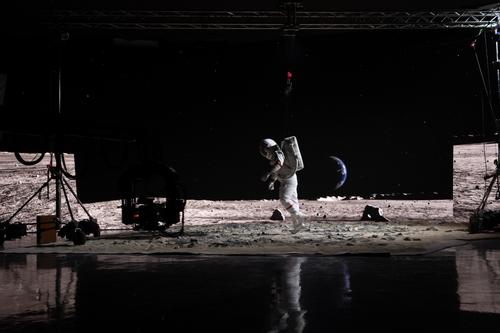Filming post-COVID19: Rules and Opportunities
Since lockdown began, almost every production studio has paused operations. According to Adrian Wootton, CEO of the British Film Commission, there’s currently over £1 billion worth of productions ‘moth-balled’ around the UK.
As restrictions are gradually lifted, however, studios are getting back to work – albeit in a radically different way to before. In the absence of an en-masse vaccination, the coronavirus still poses a very real threat to the health of production professionals, and is likely to do so for quite some time. To minimise the risk, studios will need to comply with new rules that dictate how they operate. With our robotics, camera tracking and VP technology, Mo-Sys are in an ideal place to cater for these needs. To address the challenges, we are working on strategies and new products that we will reveal in the coming weeks.
In the meantime, read on to find out why we consider the challenges of this period as a catalyst for positive, long-lasting change to the film production industry.
The new rules for studios
Whilst various studios have issued their own rules on how they plan to mitigate the risk of transmission during productions, most official industry bodies have now published more authoritative guidelines. The UK’s main broadcasters (ITV, BBC, Sky, Channel 4, Channel 5, STV, and ITN), for instance, have released joint guidance on how to manage the risk of COVID during broadcast production. The main points are:
- Maintain social distancing rules in studios
- Reduce the number of people on-site at any one time
- Minimise travel wherever possible
- Minimise physical contact between crew
- Improve the hygiene of work equipment
Over in the States, the proposed rules are much the same. At the beginning of June, the Alliance of Motion Picture and Television Producers released a wide-ranging white paper that covers everything from production-specific concerns (make-up, casting, writers etc.) to testing capabilities. What’s constant, however, is the need to minimise physical contact between crew members regardless of their roles.
The role of technology
In order to comply with these new measures, we’re likely to see more studios adopt remote and virtual production methods – hastening a trend that was already well underway before the pandemic.
Remote-camera heads, for instance, can be used to ensure social distancing measures are maintained within studios – increasing the space between crew members without compromising the functionality or movement of cameras.
Even more innovative, however, are remote-controlled cameras. Mo-sys’ soon-to-be-released TimeCam permits camera operators to have full control over camera movement without being present on-site. This effectively means that they can control cameras from the other side of the world, with no perceived delay. The implications of such tech are clear – not only do production teams reduce risk to the health of their staff, but they significantly cut costs, time, and greenhouse gas emissions associated with international travel.
And that’s if any travel is actually necessary. The capabilities of virtual production (VP) have now reached a point where even the most ambitious environments can be generated in graphics engines with unimaginable precision (just check out the power of UE5 below). According to Emmy-awarding producer and industry professional, Richard Janes, as much as 80% of all TV and film production could be effectively switched to VP.
In essence, this amounts to a monumental shift in production practices. The days of large teams moving around multiple locations, setting up and decamping everywhere they go, are over.
The new model will be characterised by less travel, fewer people on-site (using green screens, LED walls, and remote-controlled cameras in large sound stages), and greater creative freedom.
Safer, faster, and more cost-efficient
Remote and virtual production methods aren’t new. Many studios have been using them for quite some time – Westworld, Gravity, and Shape of Water are just a few productions to have utilised Mo-Sys’s remote head tech, whilst our VP solutions are currently employed by Netflix productions.
The current situation, however, will prompt yet more still to take up the technology. And when they do, they’ll discover that the benefits go beyond safeguarding the health of their crew; realtime virtual production significantly reduces the need for post-production editing, saving time and money whilst providing producers with new creative opportunities.
Although the lockdown has put a pause on studios and broadcasters around the world, therefore, it seems that it’s about to trigger a revolution in film and tv production.
If you’re currently looking at ways to integrate virtual production into your projects, please get in contact with us. Our expert technicians will be able to advise on the capabilities of our VP tech, and suggest the best setup for you.




